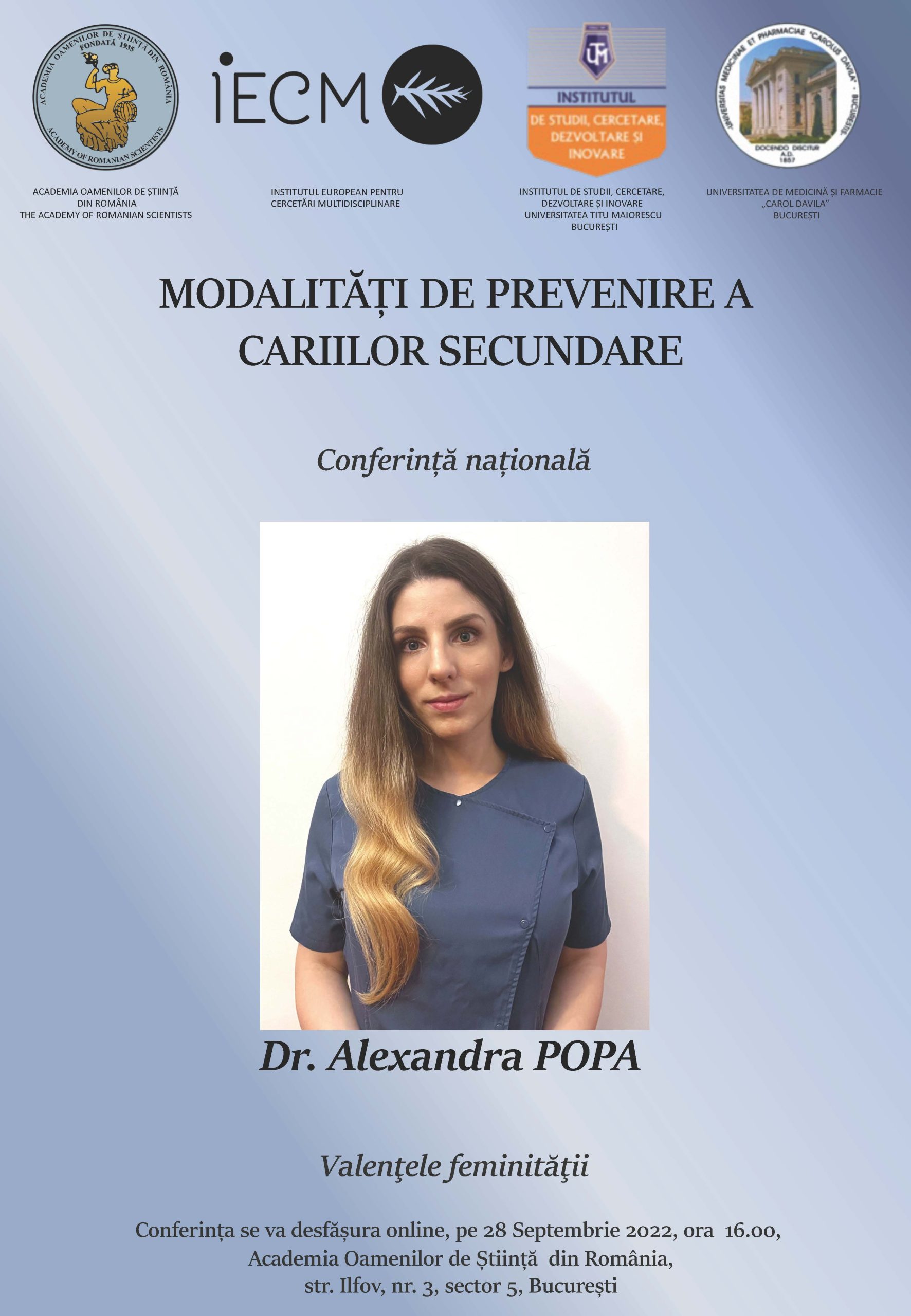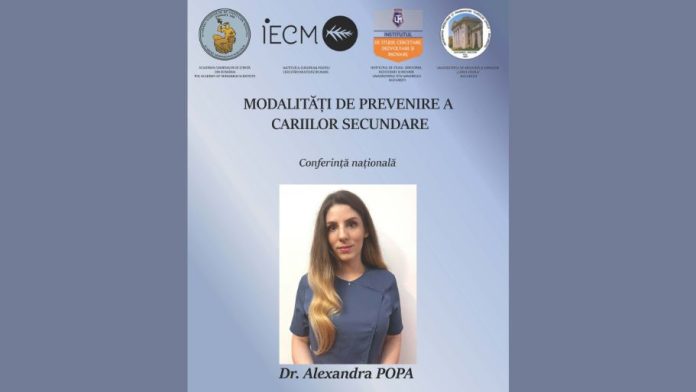THE ACADEMY OF ROMANIAN SCIENTISTS, THE EUROPEAN INSTITUTE FOR MULTIDISCIPLINARY RESEARCH, THE INSTITUTE FOR STUDIES, RESEARCH, DEVELOPMENT AND INNOVATION – TITU MAIORESCU UNIVERSITY OF BUCHAREST, “CAROL DAVILA” UNIVERSITY OF MEDICINE AND PHARMACY, BUCHAREST, organizes the national conference “Ways to prevent secondary caries”, held by Dr. Alexandra POPA, in the framework of the programme Valențele de la feminidad.
The conference will take place online on 28 September 2022 at 16.00
Academy of Romanian Scientists, str. Ilfov, no. 3, sector 5, Bucharest
Restorative dentistry has benefited in recent decades from considerable progress in dental materials and restorative techniques.
Starting from amalgam, a material that offered high strength but an unsightly appearance, the concept of adhesive dentistry was developed to create materials that would adhere to the dental substrate and offer a satisfactory degree of aesthetics.
Composite resins have become preferred over time, due to their physical, mechanical and optical properties, but also because they offer faithful colour rendering, with a wide range of shades and colours available on the market.
Although composite resins have a multitude of qualities, it has been observed over the years that they can also have some disadvantages, in particular the occurrence of secondary caries and marginal fractures. These problems occur due to polymerisation shrinkage of the material during the setting stage, which will cause stresses leading to adhesive failure and formation of voids.
Subsequent developments have been based on decreasing or even stopping polymerisation shrinkage, with manufacturers modifying both chemically and physically the structure of the composites.



